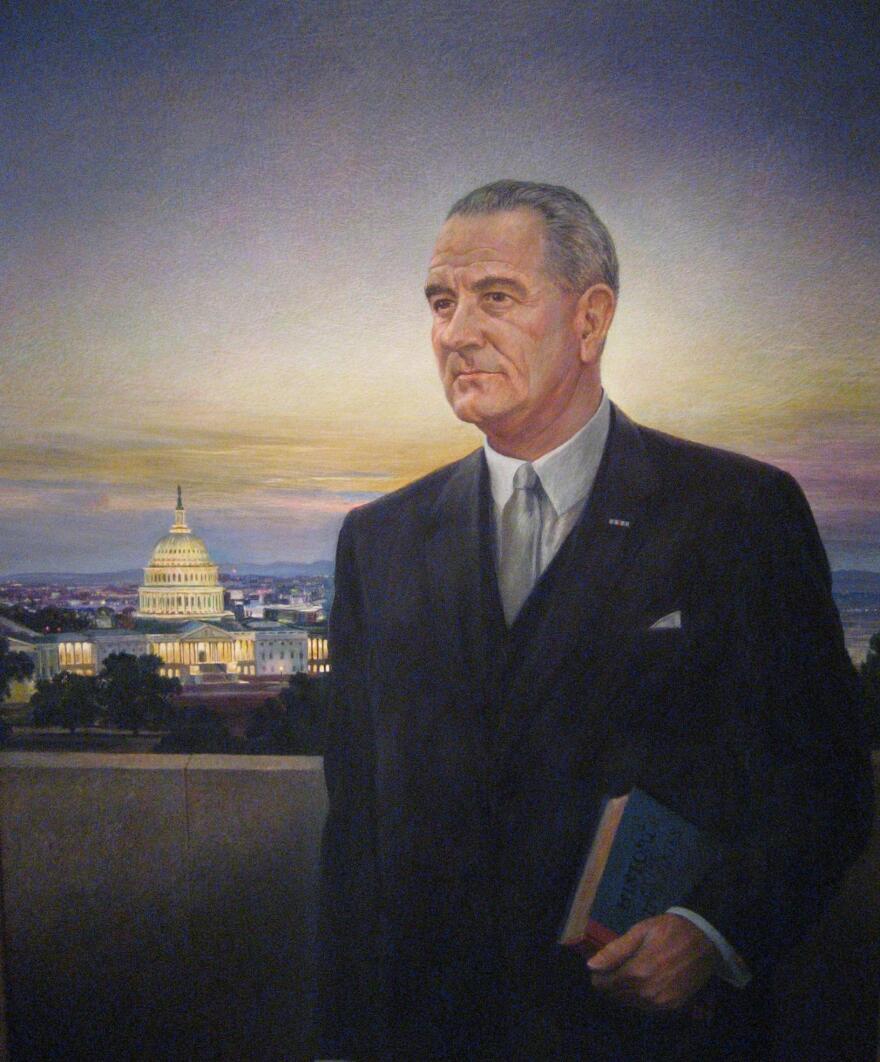This story was originally published on March 11, 2015.
In 1967, famed landscape artist Peter Hurd unveiled a portrait of then-President Lyndon B. Johnson. It was to be Johnson's official portrait and would hang in the White House in perpetuity. There was one problem: LBJ hated it.

Upon the portrait's completion, the 36th president simply called it “the ugliest thing I ever saw,” and Lady Bird Johnson criticized it for not fully encapsulating her husband’s “gnarled, hardworking” hands.
The Johnsons refused to hang the portrait in the White House, so Hurd, in a fit of vengeance, put the painting on display. It debuted on March 12, 1967, at the Diamond M Museum in Snyder, Texas, to the largest crowd the museum had ever seen.
Hurd's painting wasn’t Johnson's first go-round with presidential portraiture, and it wouldn’t be his last. He was painted by Norman Rockwell in 1964, about two weeks after the passage of the Civil Rights Act of that year. Johnson was run ragged and fiercely uncooperative, according to Deborah Solomon’s biography of Rockwell, American Mirror. The president gave Rockwell a strict 20-minute window for his sitting, during which Johnson was reportedly uncooperative.

About a year and a half later, LBJ sat for Hurd at Camp David, but was less accommodating to the artist. He gave Hurd two sittings for the portrait, but nodded off during one of them.
Hurd presented the portrait to the president in October 1965. To Hurd’s displeasure, LBJ refused to accept it. Hurd defended his depiction, and Johnson responded by bringing out the Rockwell portrait, touting that artist’s success – despite his own attempts to sabotage Rockwell's portrait during the sitting.
After publicly displaying the rejected portrait, Hurd donated the work to the Smithsonian's National Portrait Gallery, where it hangs to this day. Despite expressing an affinity for it to Hurd, LBJ didn’t end up keeping the 1964 Rockwell portrait. He re-gifted it in 1966.
Johnson sat for his third and final portrait in 1968, shortly before leaving office. Artist Elizabeth Shoumatoff had previously painted portraits for Franklin D. Roosevelt. In an interview in 1973, Shoumatoff said Johnson responded positively to the depiction, replying simply, “It’s excellent. I like it very much.”





